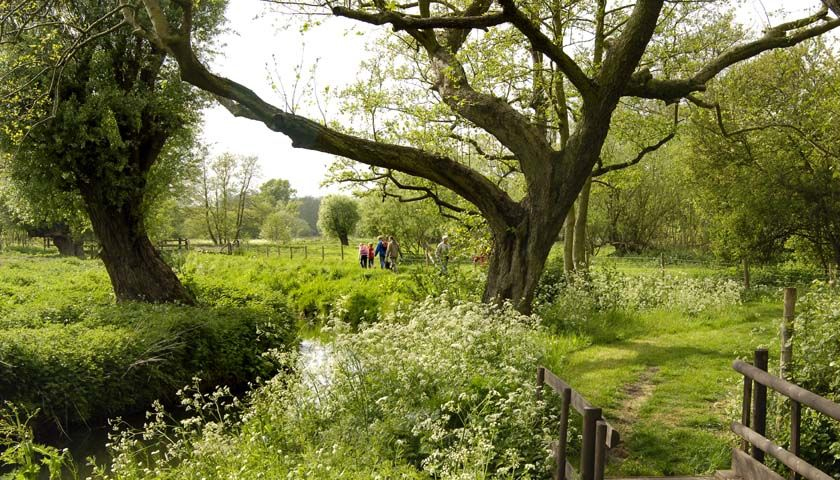Eight exciting environmental artists are coming together to help the nation engage with nature – thanks to the ScottishPower Foundation.
Selected by the Museum of East Anglian Life, soon to rebrand as the Food Museum, to create natural art installations that champion sustainability, the artists will create a riverside sculpture trail as part of the museum’s ‘River for All’ project.
The Museum of East Anglian Life is rebranding as the Food Museum and as one of its first projects, the Foundation-funded ‘River for All’ will create the sculpture trail and accessible pathways along the museum’s riverwalk to give visitors the opportunity to experience nature.
The dramatic art installations will include a dragonfly sculpture made from natural materials, a giant 3D spider’s web and a sculpture made from drinks cans dropped in the museum’s recycling bins. All eight installations will explore the importance of maintaining wildlife habitats in rural communities.
Providing access to previously inaccessible woodland and rivers, the project has been made possible thanks to the ScottishPower Foundation, which supports projects that make a positive impact on people and communities as well as helping the advancement of arts and culture, citizenship, education and environmental protection across the country.
Melanie Hill, Executive Officer and Trustee at the ScottishPower Foundation, said: “This is an exciting project for the Museum of East Anglian Life and an invaluable opportunity to bring together incredibly talented artists to engage local people and visitors and help explore sustainability and the importance of wildlife habitats in rural communities in a really powerful way.
“The use of such eye-catching artwork to share such an important message was one of the reasons we chose to fund the project and we’re proud it will be one of the museum’s first projects in its new position as the Food Museum. It’s truly inspiring and set to be a great addition to all the museum offers. I look forward to exploring the trail when it launches and seeing the artists’ work for myself.”
The ‘River for All’ artists are:
- Larry Jackaman will make a sculpture reusing drink cans from the museum’s recycling bins. Based in Suffolk, Larry is part of ‘The Green Bottle Unit’ which produces collaborative artwork from recycled glass for public commissions across the UK.
- Joella Gardner is producing a dragonfly sculpture constructed from willow and other natural materials such as soil and leaves, gathered while exploring the riverside walk and inspired by the natural world.
- Kazz Morohashi is working on an interactive collection of carved woodland animals using found wood. Part of the collection will invite visitors to add a piece of nature they find along the trail to the piece, to encourage them to engage and connect with nature.
- Lois Cordelia is a community artist who will be creating a giant three-dimensional spider’s web which symbolises the interconnectedness of living things, with a specific emphasis on the extraordinarily rich biodiversity of the Rattlesden valley in Stowmarket.
- Spadge Hopkins is inspired by 3D visualisations of animals and will be creating five steel sculptures of birds native to the trail.
- Stephanie Hartick will be working across a range of media including ceramics, drawings and poetry to create a series of ceramic sculptures that explore the sensory realms of decomposers.
- Aaron MacDermott will create a life-size buzzard made from found forest wood supported by a metal internal frame.
- Elizabeth Cooke is designing a larger-than-life muntjac deer in willow and bat sculptures from steel which will verge on the abstract.
The successful artists were selected by museum staff and trustees, including Museum Director, Jenny Cousins.
Jenny said: “The quality of entries was fantastic, and we’re really excited about our final line up of artists for this restorative project. Their artistic visions encapsulate our aim of helping reconnect our visitors with the environment and culture, and we’re thankful for the ScottishPower Foundation’s support for this project. We can’t wait to see it come to life.”

